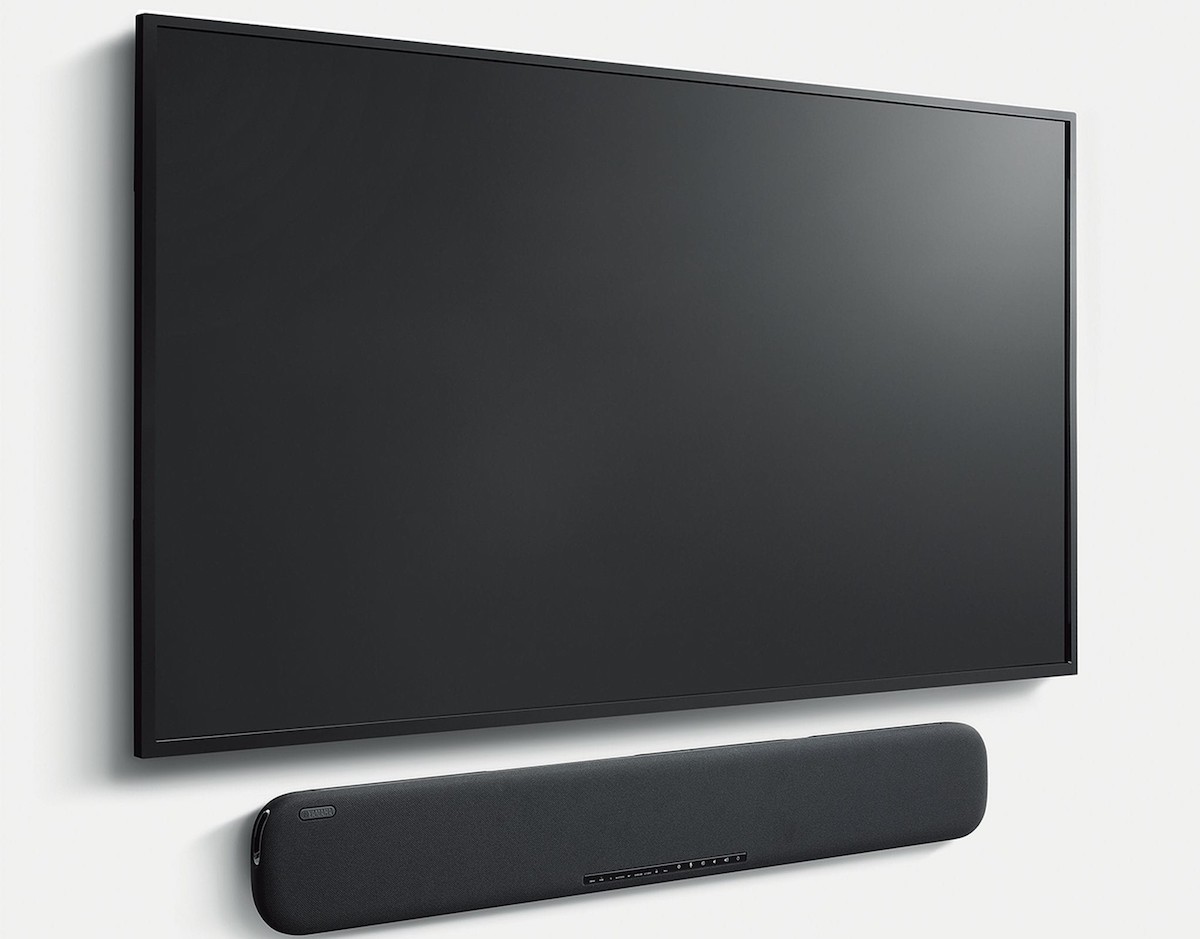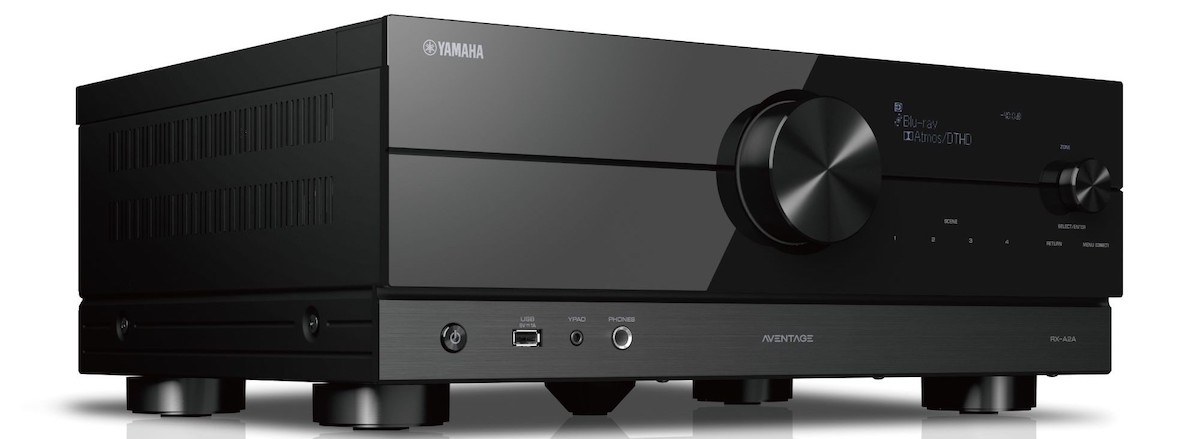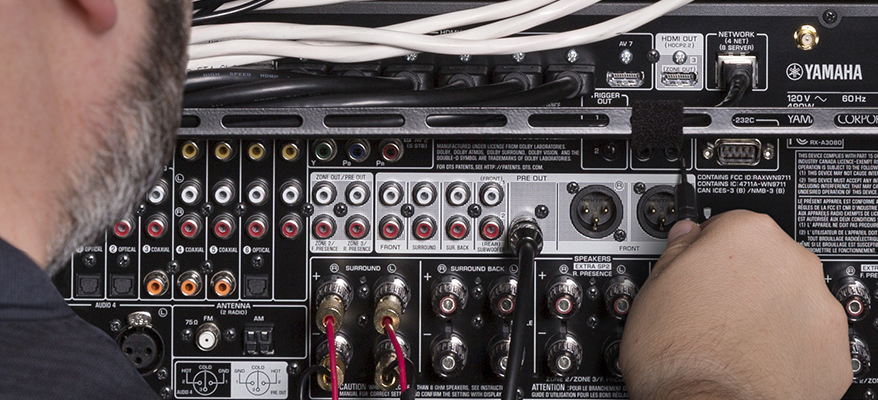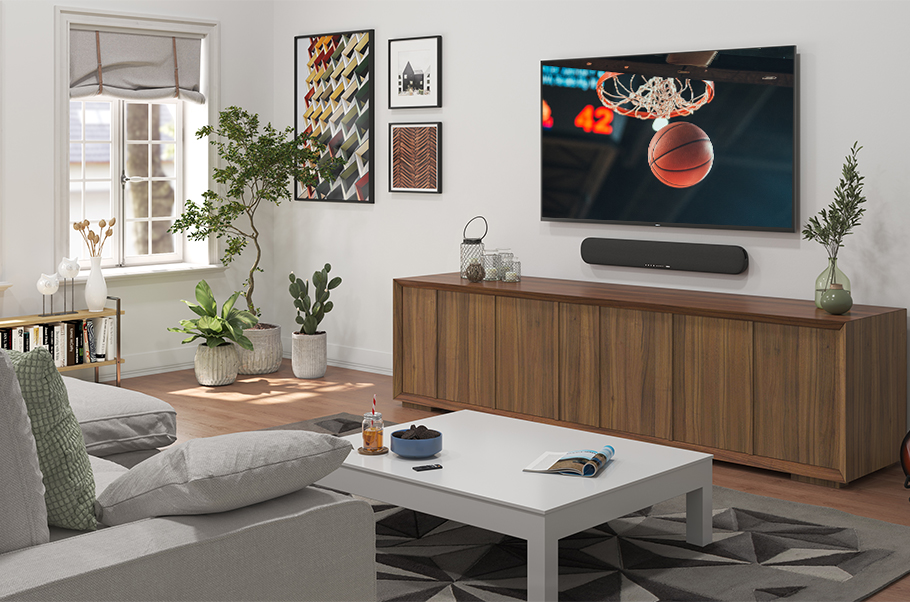So You’re Getting a New 4K (or 8K) TV for the Holidays
Tips for picking the right Ultra HD TV … and enhancing it with the right audio add-ons.
As the holiday season approaches, thoughts turn to gift-giving. Whether you’re shopping for the family or want to treat yourself to something special, one of the brightest presents you can put (or find) under the tree this year is an Ultra HD TV.
There’s good reason why. Entertaining at home has never been more popular, as households look for ways to stay connected and engaged. What better way to do that than through the lifelike images on the screen of a state-of-the-art TV?
In this article, we’ll take you through the ins and outs of buying a new UHD TV, and point you toward some audio components that will let you take full advantage of both the sights and sounds that make a TV such a great holiday purchase.
Size Matters … and So Does Tech
Most shoppers naturally gravitate toward large displays. And that’s okay, as long as the room in which the TV will be placed is big enough and you’re able to sit the proper distance away. But it takes more than impressive diagonal inches to deliver an enriched entertainment experience. For the best picture possible, an Ultra HD TV must excel at five basic functions: resolution, frame rate, bit depth, color space and brightness range. If the TV you purchase is lacking in any of these areas, you could be left with a serious case of buyer’s remorse. Let’s take a closer look at each of these in turn.
1. Video Resolution
4K or 8K? 4K is great, but there’s been a lot of buzz about 8K TVs lately. They’re currently the best thing going in terms of picture quality, and are poised to make an even greater impact in the very near future — future being the keyword, since there’s not very much 8K video content available to watch … yet. When that happens — and it will — images will reach a whole new level of realism. Just like 4K one-upped 1080p, 8K will outdo 4K, mainly due to better resolution. The picture resolution of 8K content presented on an 8K TV is four times that of a 4K TV. Bottom line: Trading up to an 8K TV prepares you for the future of video and offers unparalleled picture quality if you can fit it into your budget.
As a bonus, even “regular old” 1080p and 4K video content from cable, satellite, streaming sources and physical discs look better when displayed on an 8K TV. That’s because 8K TVs have something special built inside: advanced processors that upscale incoming video signals, which results in a finer, clearer, sharper image.
2. Frame Rate
Frame rate defines the speed at which video is captured on film and displayed on a TV. The faster the frame rate, the more images are displayed every second. But don’t let the numbers fool you: Faster frame rates are great for video games, but for movies, you’re better off sticking with the standard spec of 24 fps (frames per second) to avoid motion blur.
3. Bit Depth
The pixels that form an image are comprised of individual “bits.” More bits per pixel (bpp) result in a wider variation, or shades, of each primary color — red, blue and green. When more shades of color can be discerned, images appear more natural and have greater depth.
4. Number of Colors
Images also appear more lifelike when they can be created from a larger palette of colors. An Ultra HD TV that supports the latest spec (Rec. 2020) delivers a wider range of colors to the screen — even beyond red, blue and green variations — than earlier specs like Rec. 709.
5. Brightness
The headlamps of a car, city streetlights, sunlight hitting a pane of glass — images like these appear brighter and more akin to how they look in real life when the Ultra HD TV on which they are presented supports high dynamic range (HDR). Without it, bright areas of a screen can come across as somewhat muted. Look for a TV that supports the HDR10+ format, which allows for maximum brightness and color depth.
HDMI® 2.1
Some of the newest TV models incorporate a specification called HDMI 2.1, which enables HDR10+, as well as higher video resolutions like 8K and faster frame rates. Another important feature implemented in HDMI 2.1 is something called Enhanced Audio Return Channel (eARC for short). This adds a boost in bandwidth and speed so that higher-quality uncompressed audio streams like Dolby Atmos® and DTS:X™-encoded audio from movies can be sent from your TV to a sound bar or AV receiver. Which brings us to …
Add-Ons for Optimum Audio
As we’ve seen, modern Ultra HD TVs — in both 4K and 8K varieties — are capable of delivering terrific video. But in the interest of providing these great features in a cost-effective package, TV manufacturers are making their products thinner and thinner, resulting in speakers that are smaller and smaller, which begs the question: What good is a pristine picture if the audio is mediocre?
Fortunately, there are a number of audio components available that can bridge the gap, any of which makes a perfect add-on gift by providing a vastly better listening experience than the speakers built into Ultra HD TVs.
One great option is to add a sound bar such as the Yamaha YAS-109. Featuring a slim profile with built-in subwoofers, it can sit beneath a TV or can be easily wall-mounted, making its a real space-saver … yet it’s packed with technologies like DTS® Virtual:X™ to give you 3D surround sound.

If space and/or budget permit, you might consider pairing your new Ultra HD TV with an AV receiver, which can serve as the central hub between your TV and audio components. The Yamaha RX-A2A is a good example. It supports HDMI 2.1, which puts its audio performance on par with that of an HDMI 2.1-compliant Ultra HD TV. And the RX-A2A can deliver audio, including Dolby Atmos and DTS:X, to as many as seven discrete speakers to envelop the entire listening area with sound. When both the video and the audio components of a home entertainment system support the most advanced technologies available, you get a stellar viewing and listening experience that’s lifelike, immersive and engaging — something that brings home entertainment to a whole new level.

Movies are hitting on-demand services faster than ever before, offering a great opportunity to watch the latest releases from the comfort of your home. With the right features and technologies, an Ultra HD TV brings your family room closer to the cinema experience, making it a holiday gift well worth giving and receiving.
Check out these related blog articles:
What’s the Difference Between 4K Ultra HD, 8K UHD and HDR10+?
HDMI 2.1: What It Means for Gear and Gamers
What’s So Good About Dolby Atmos and DTS:X?
Click here for more information about the Yamaha YAS-109 sound bar.
Click here for more information about the Yamaha RX-A2A AV receiver.















